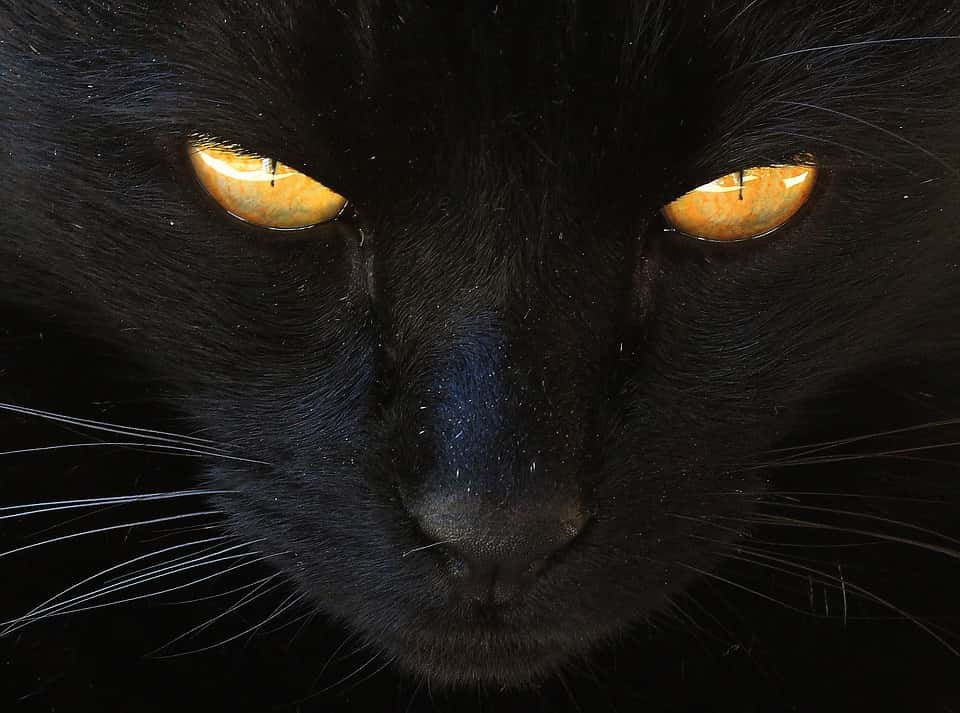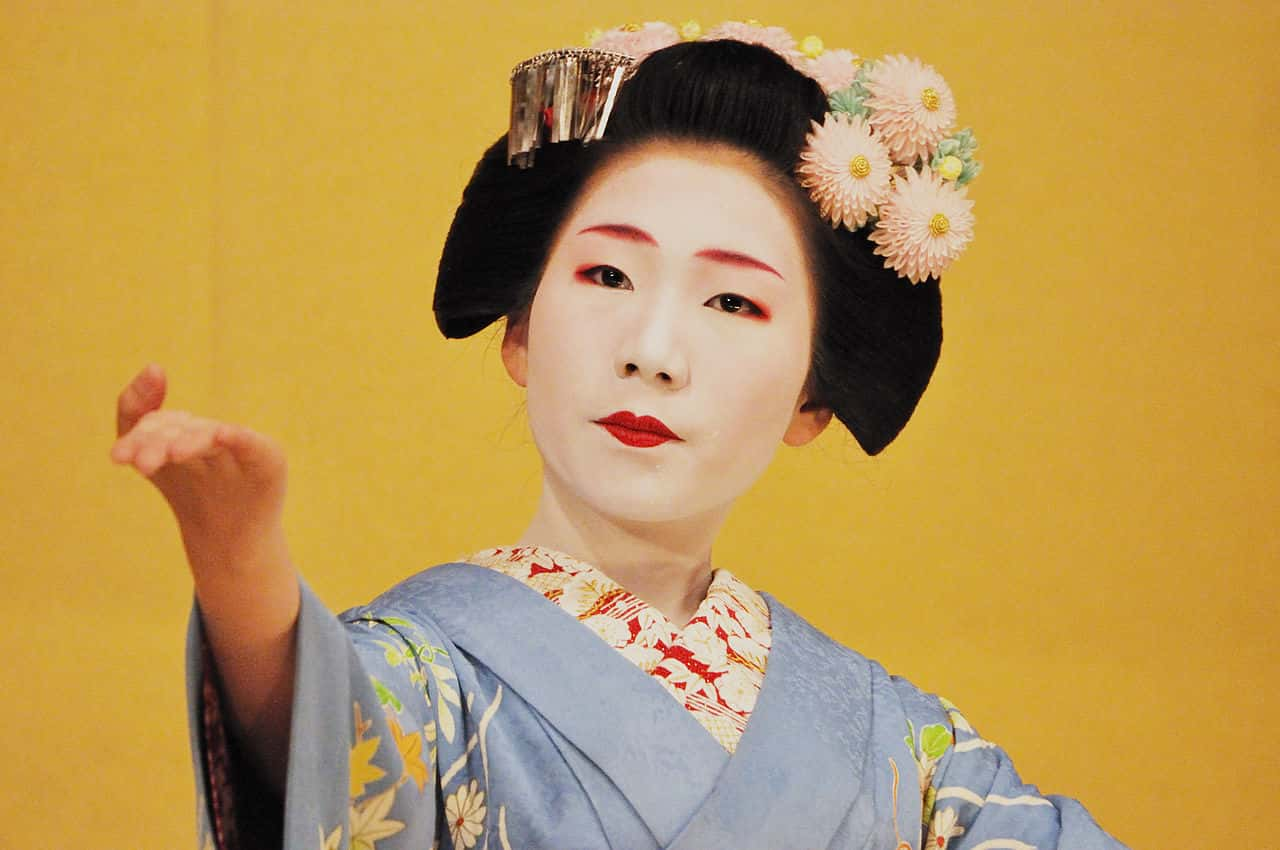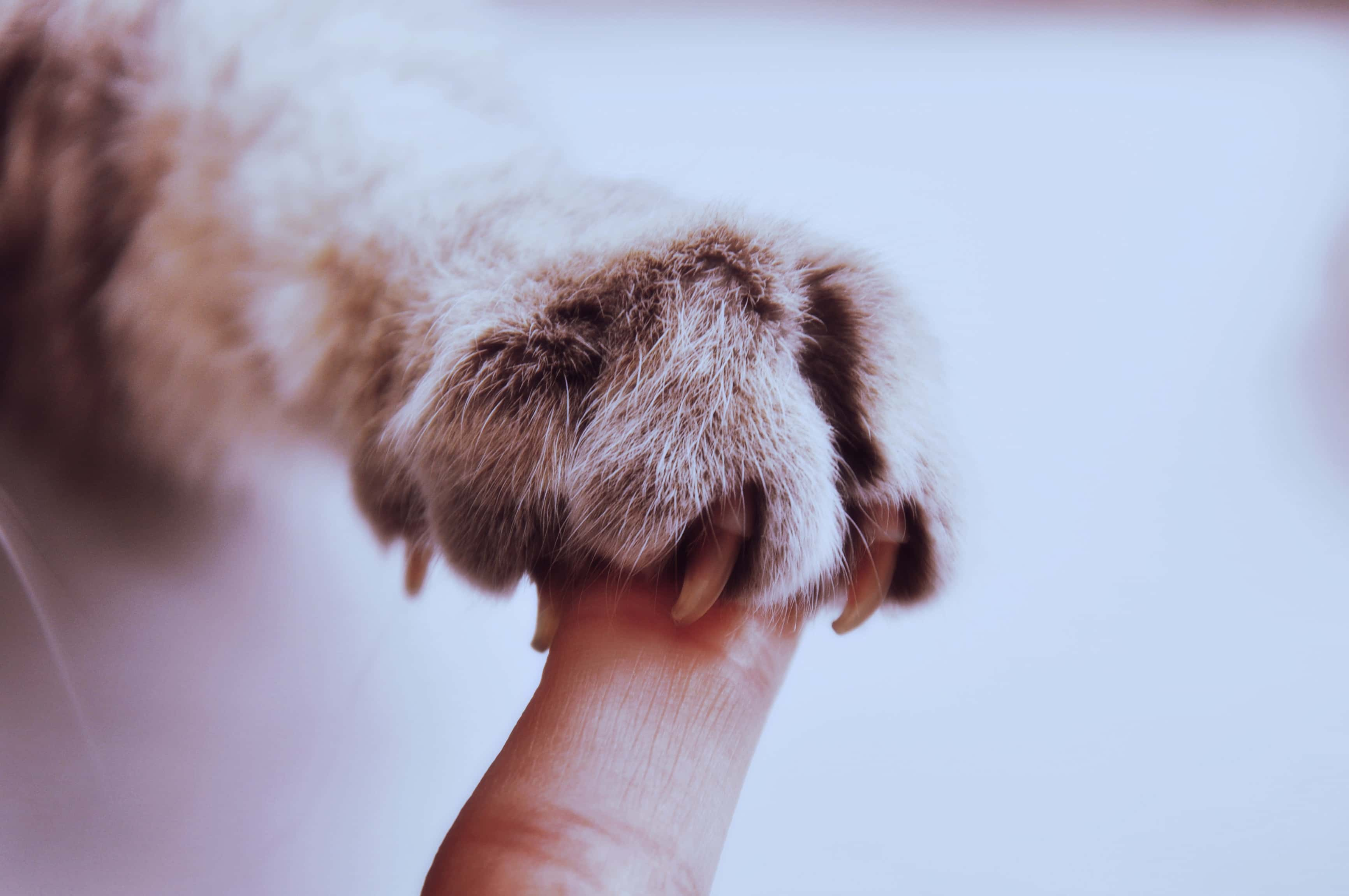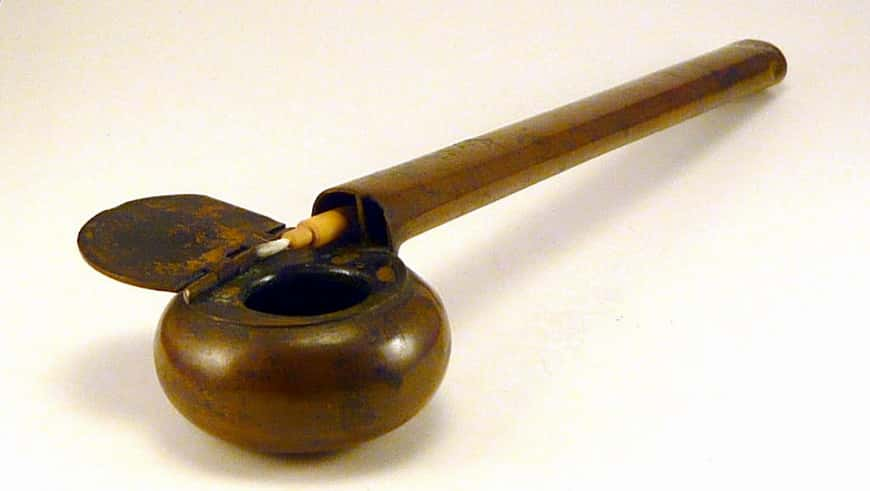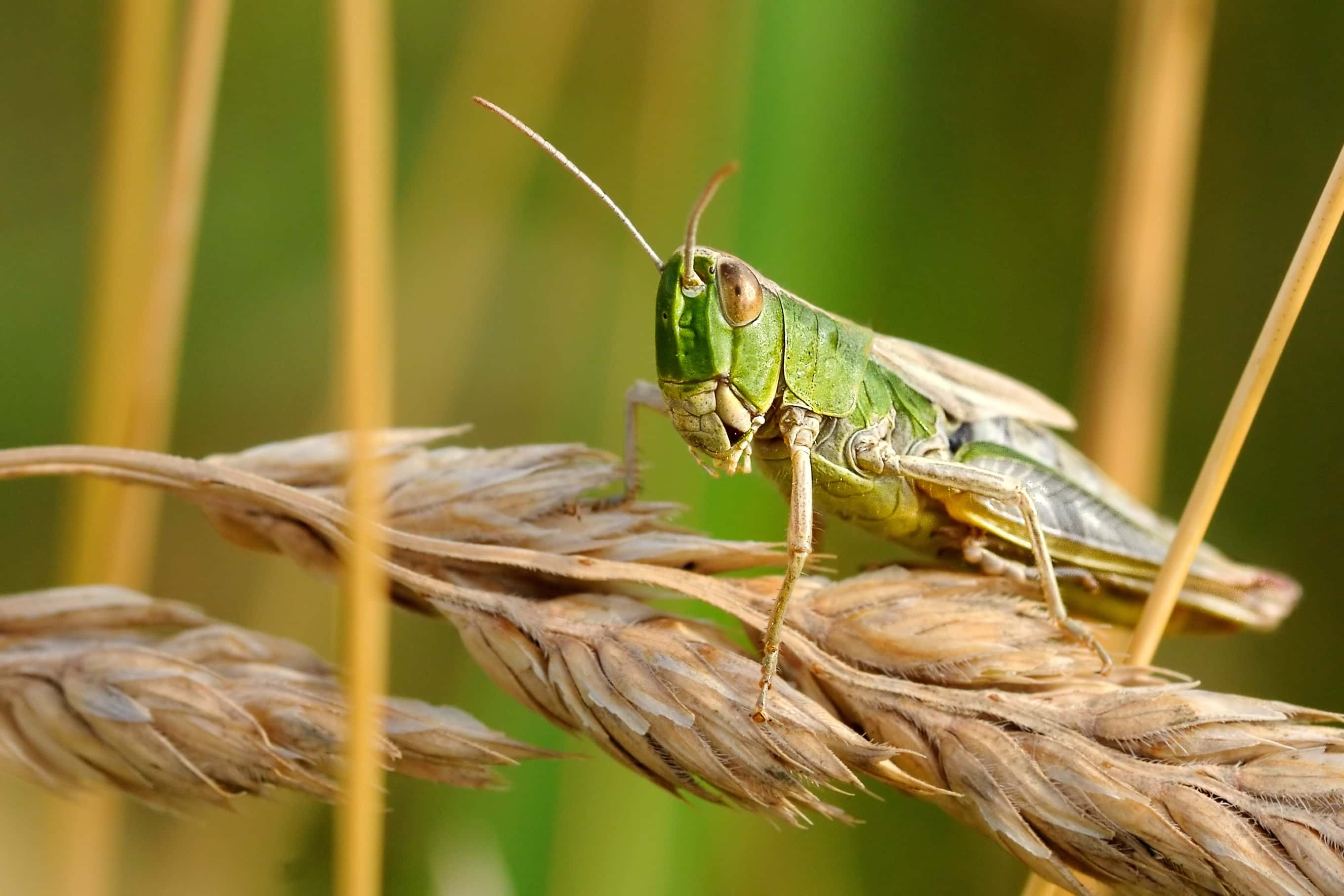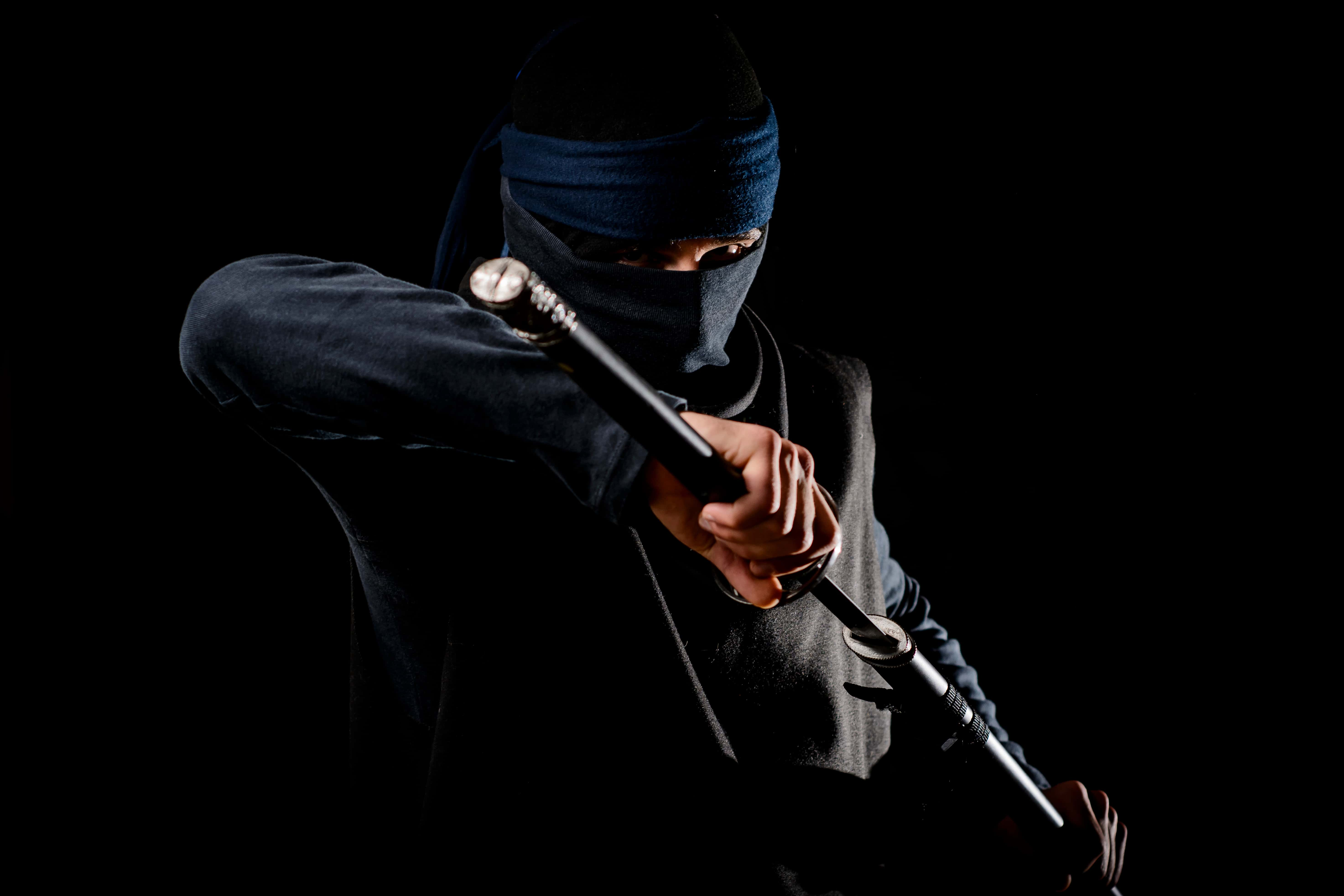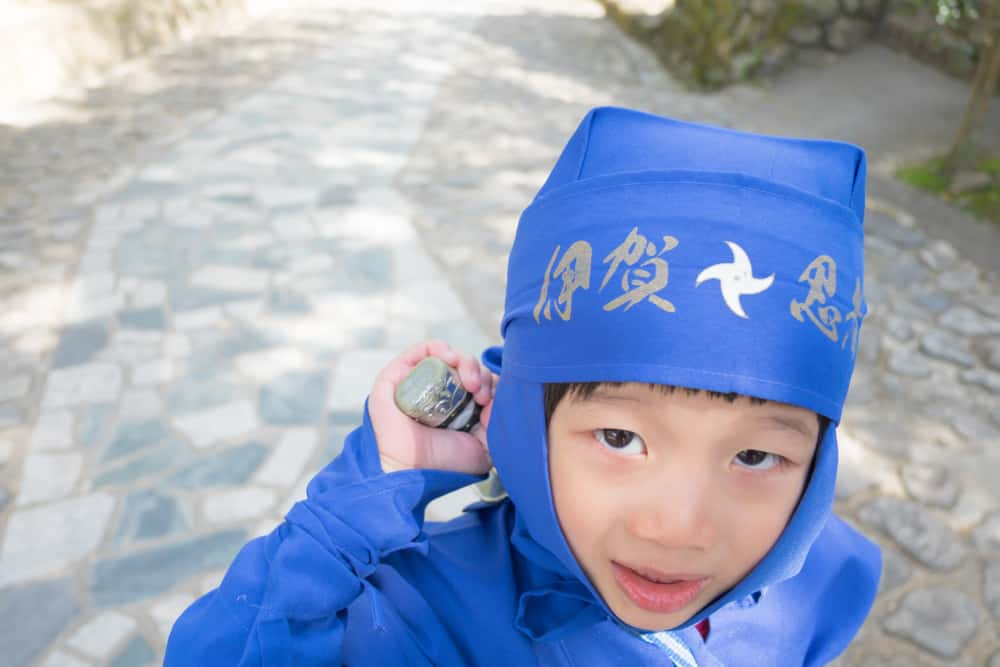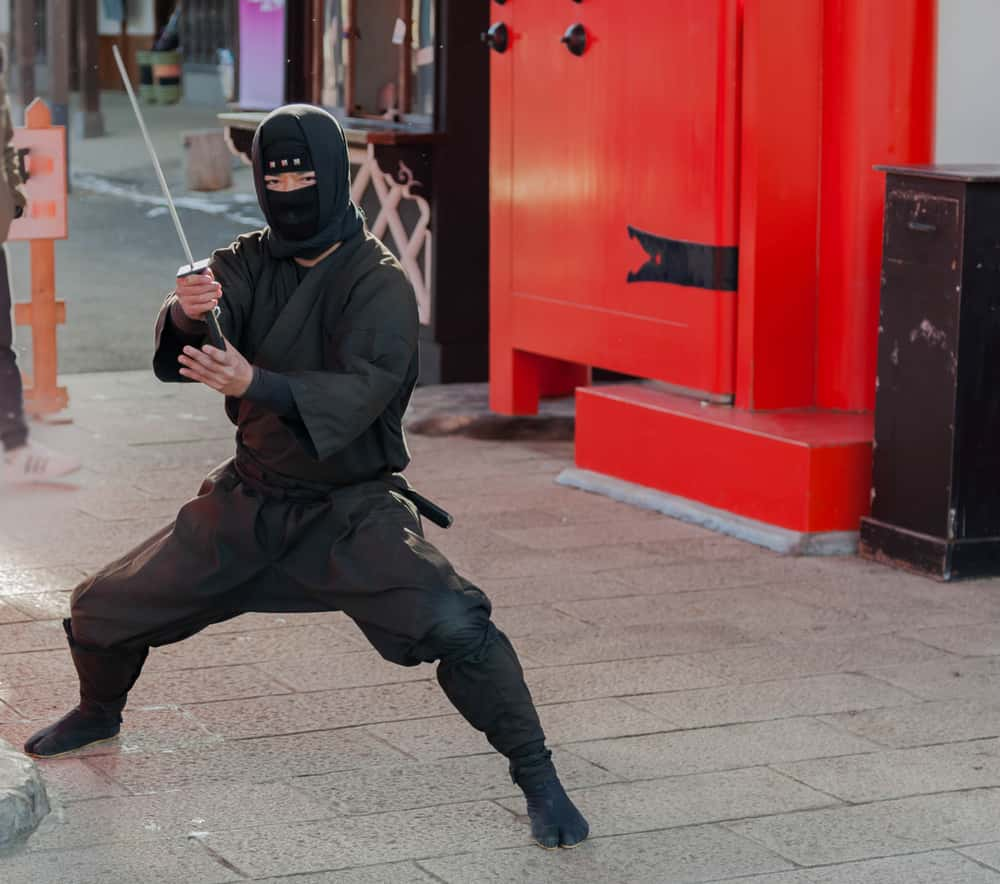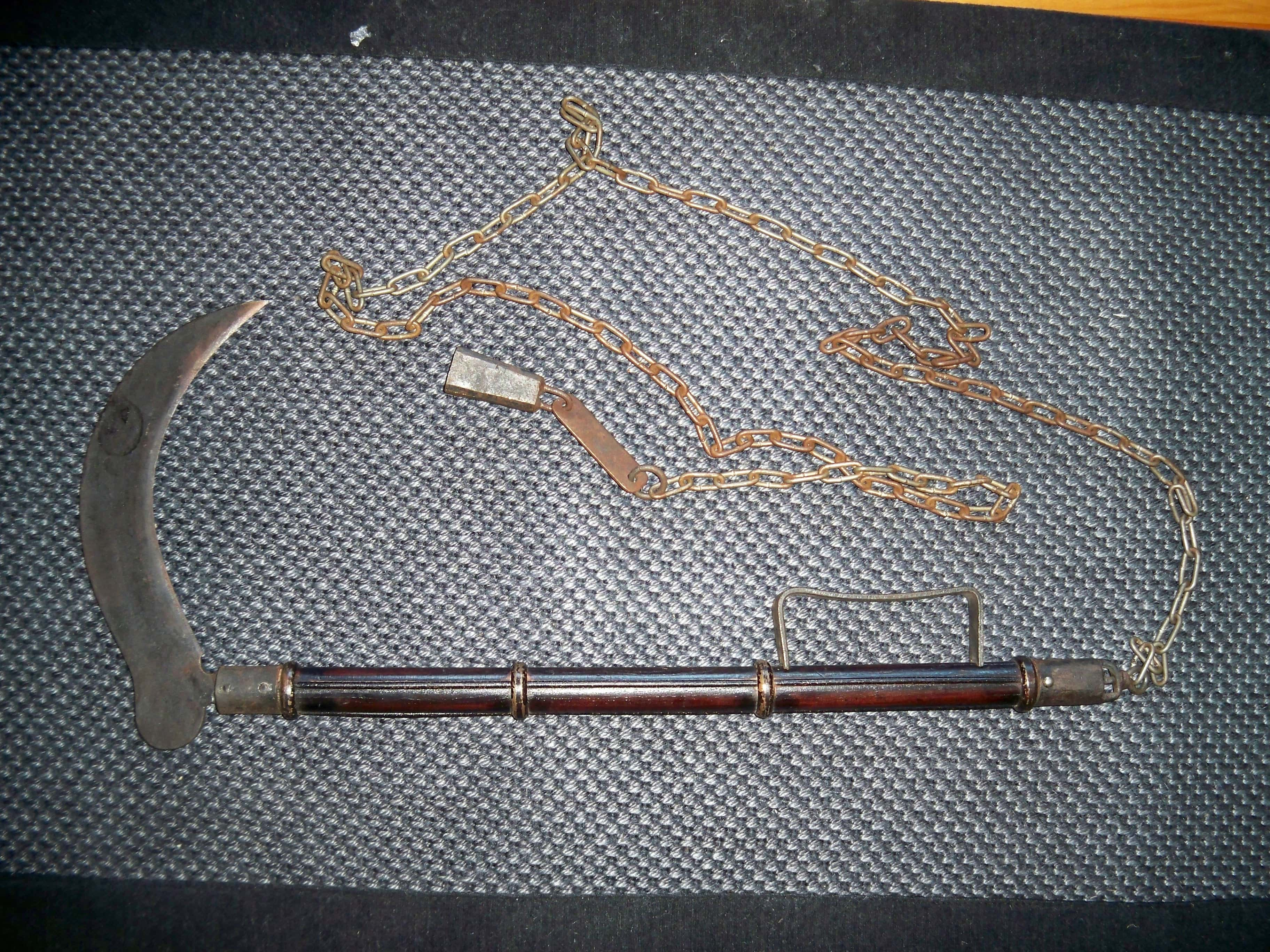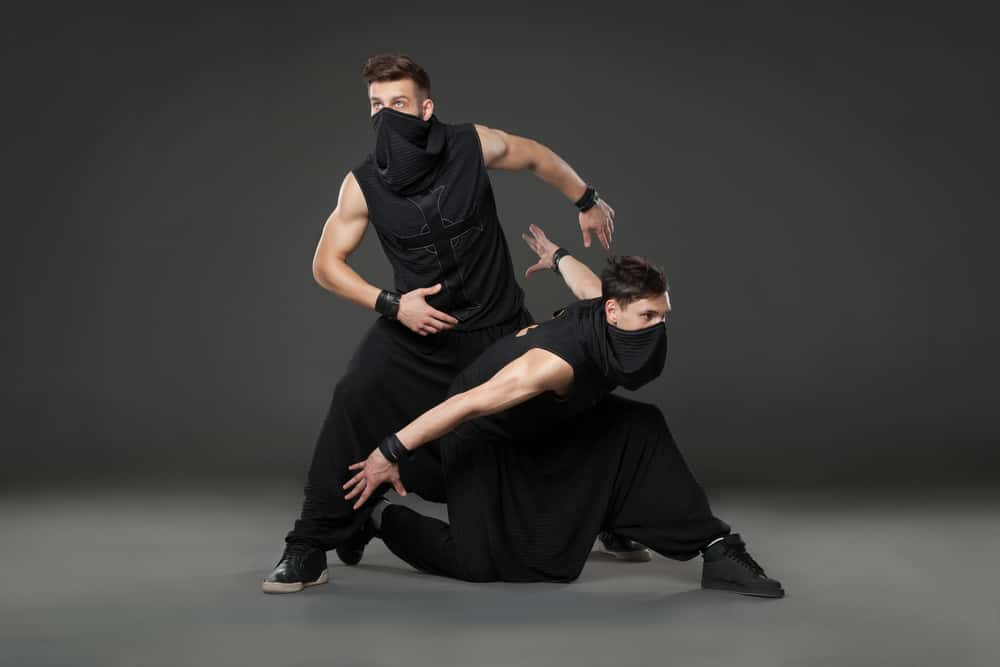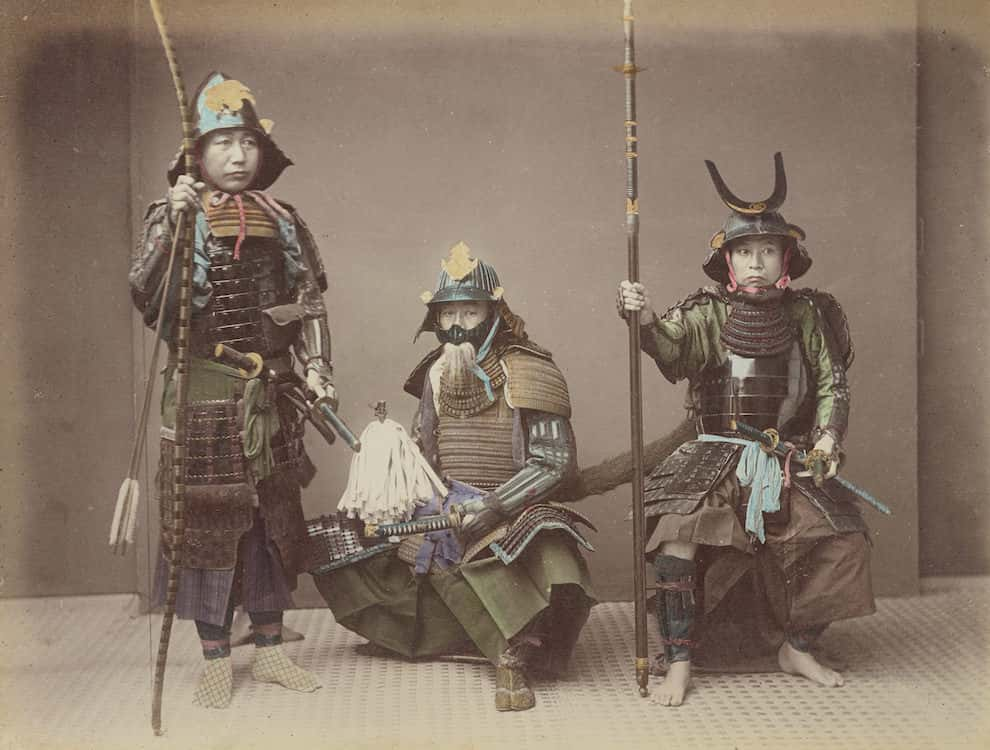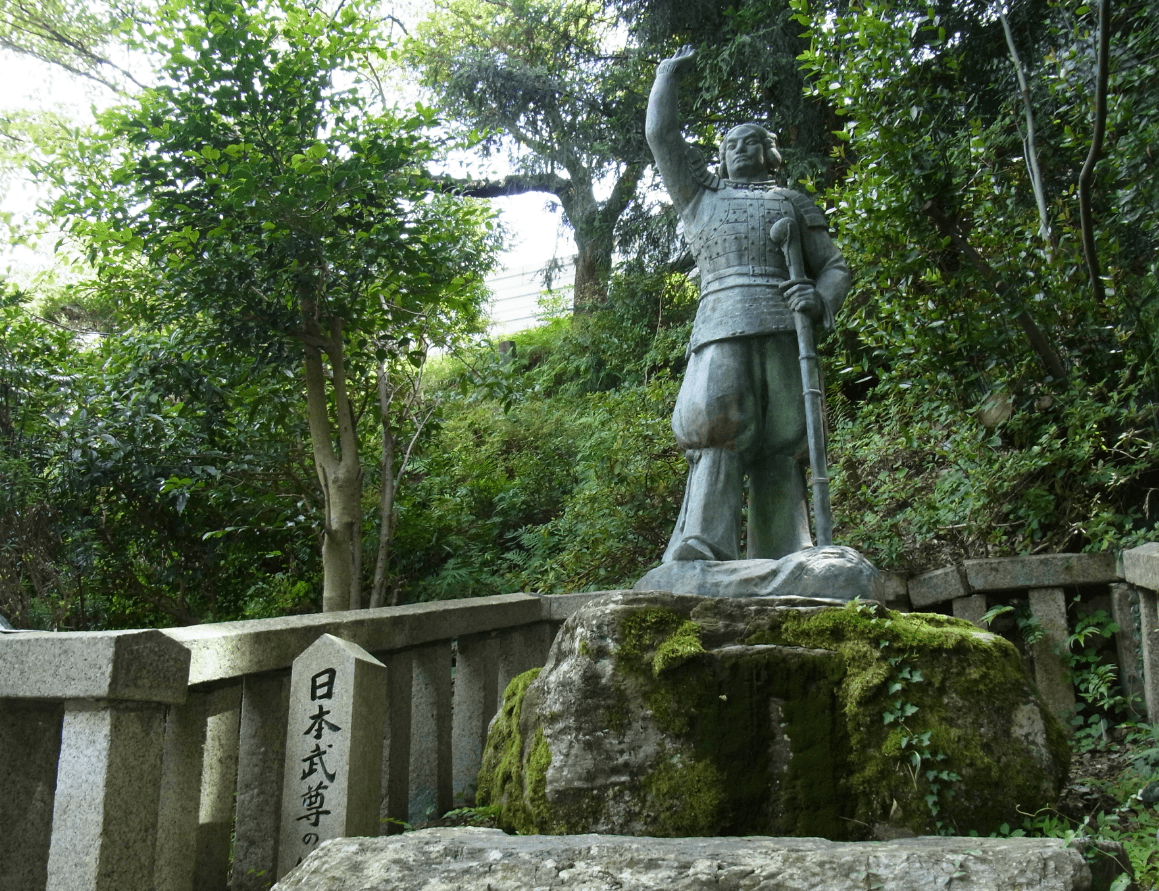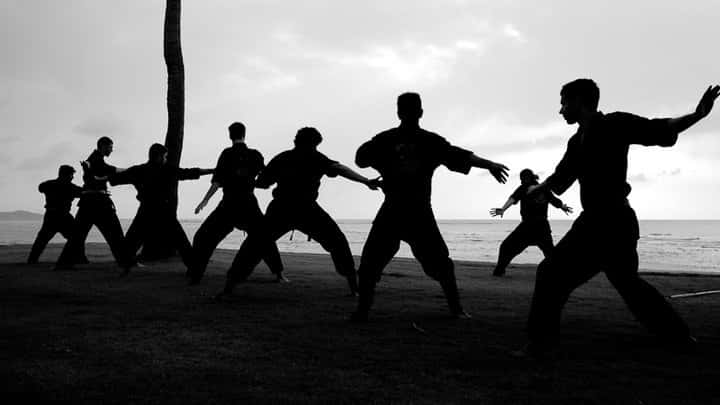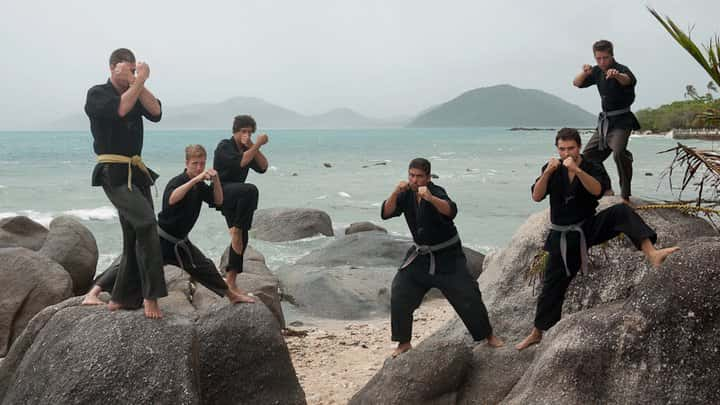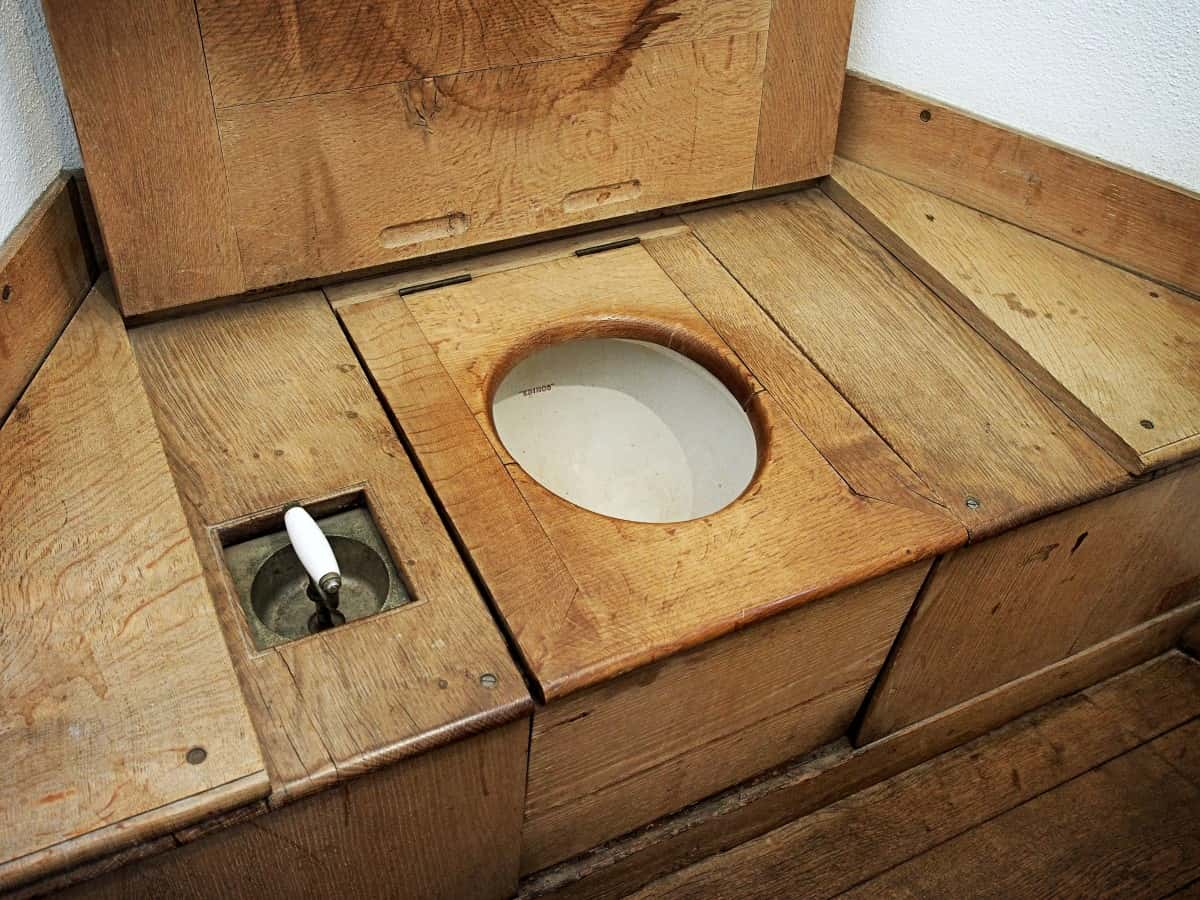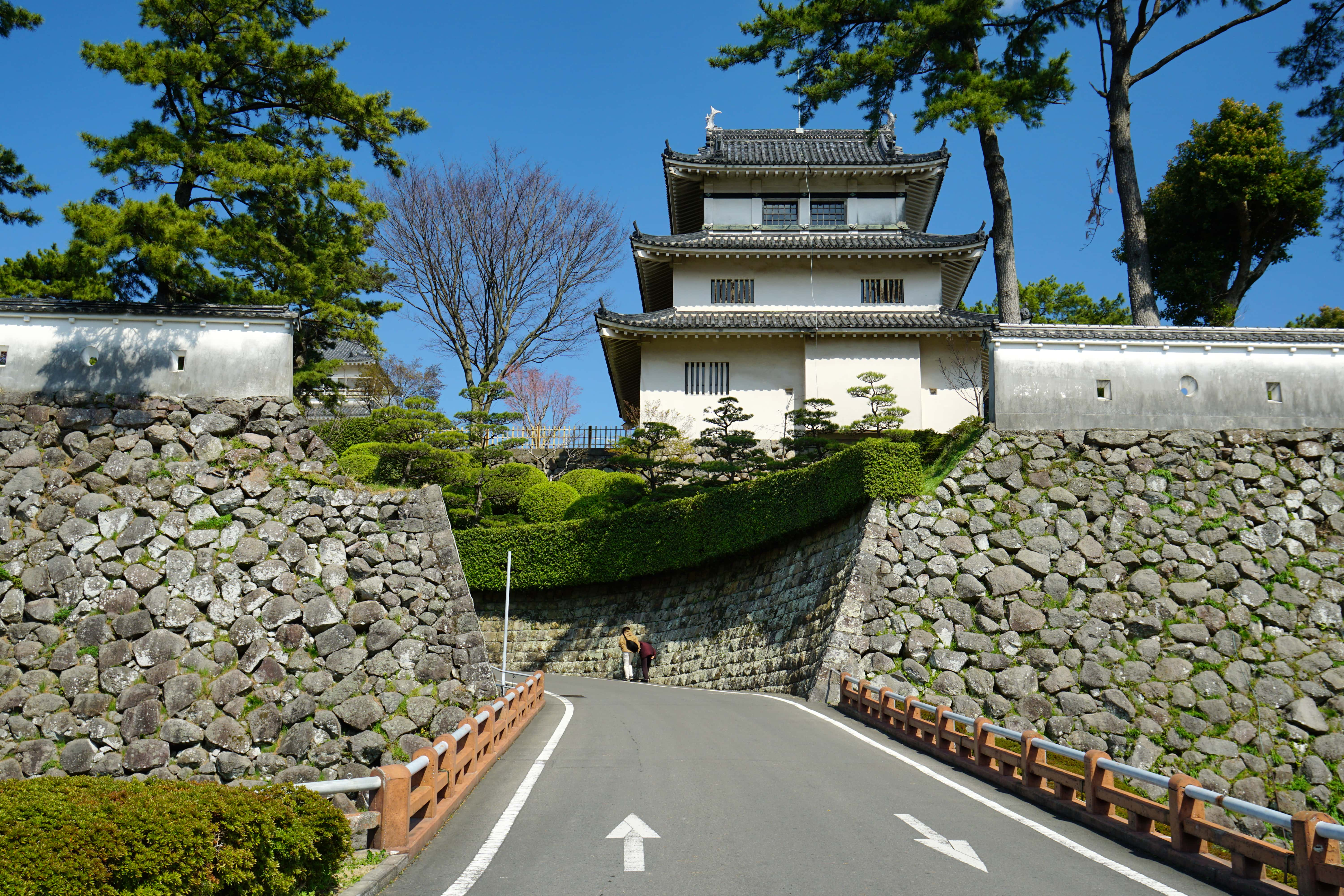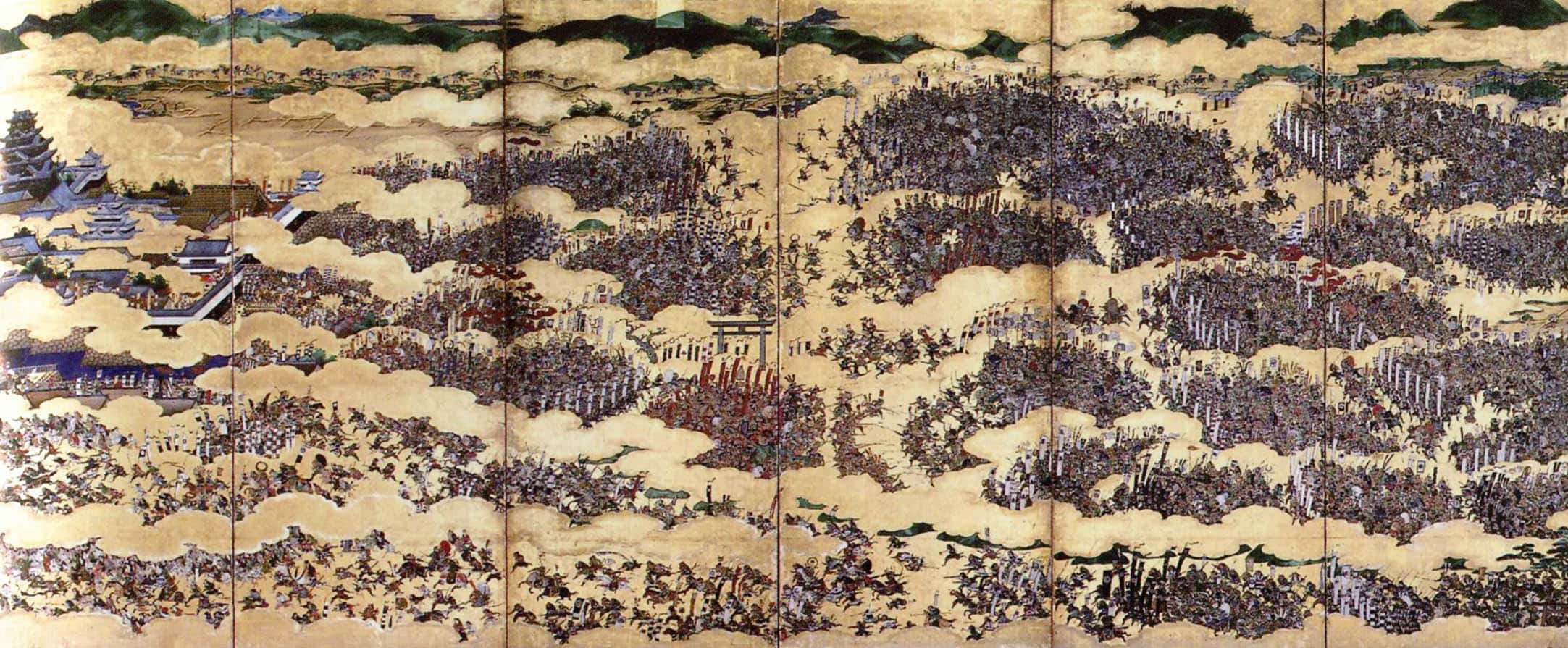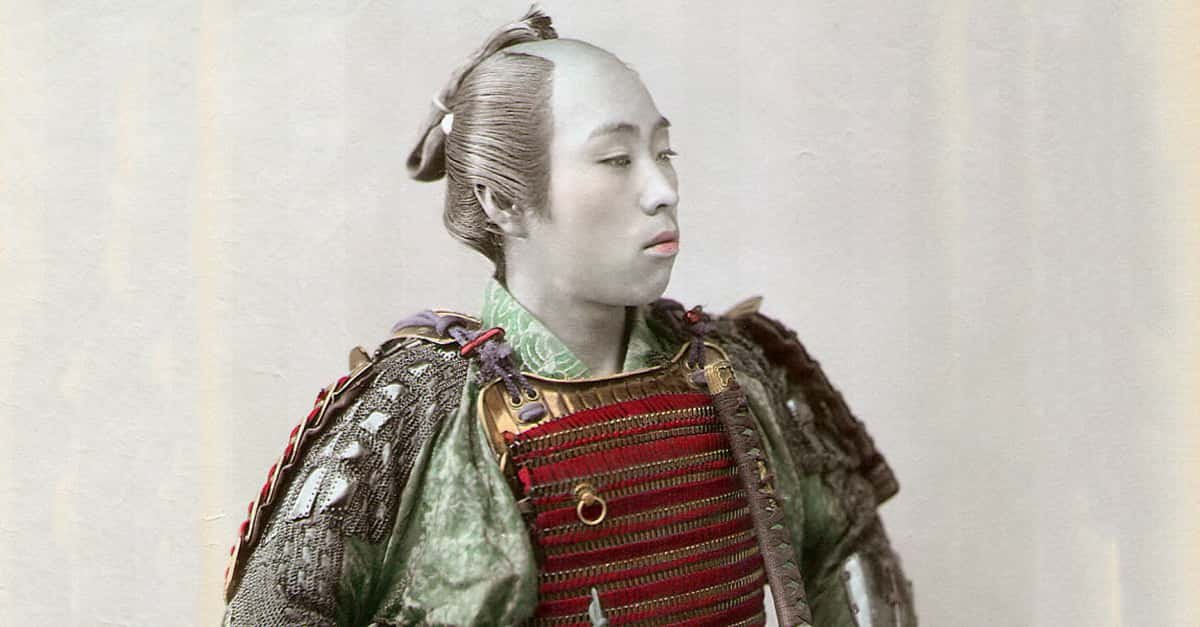33. One Powerful Lady
Mochizuki Chiyome was one of the most famous female ninjas of her time. So the story goes, she managed to recruit 300 women to form an underground espionage training operation. On the surface, it seemed that Mochizuki was running an orphanage for young women, but she was really training ninjas assassins and spies.
Sadly, while we all wish this story is true, the biography that gave this information has been largely discounted as fictionalized—but that hasn't stopped Chiyome from becoming a pop culture figure, appearing in many video games, films, and other media.
32. Jack-Of-All-Trades
Training to become a ninja wasn't all throwing stars and setting fires—wannabe shinobi had to undergo all kinds of training to gain the title. They had to learn about scouting and survival, poisons and explosives, but they also had to gain a least a cursory knowledge of various professions, because they could end up needing to take all kinds of guises in their work, and they would need to be able to pass.
31. The Message Is In The Rice
Ninjas created a system passing covert messages using colored rice. Each specific rice color had a different meaning.
30. Cat Has The Time
Ninjas often used nekome-jutsu, which was the ability to decipher the time just by looking at a cat’s eyes. Cat's eyes are very sensitive to light which causes and their pupils to change shape at specific times of the day. Think of them as the digital watch of the 16th century.
29. Deadly Hair Accessories
Female ninjas liked to wear beautiful ornate hairpins, called kanzashi. Unlike the hairpins innocently worn by most women, female ninjas employed their kanzashi for multiple uses. Hairpins would be sharpened to be used as a weapon, or dipped in poison for assassinations.
28. Watch Those Nails
Female ninjas didn’t just weaponize their hair adornments, as nail accessories proved an easily concealed weapon too. Female ninjas would attach deadly metal nails to their fingertips.
These razor-sharp weapons were called neko-te, meaning cat hand.
27. Not Just A Pencil Case
Since ninjas were used to gather information, they were often seen with a yatate, or small container made of bamboo to hold ink and writing utensils. A yatate was indispensable for writing down information, but also for concealing poison, needles, and other small weapons.
26. Move Over Pinocchio
Although ninjas used an assortment of weapons and tools, one of their most important items was a live cricket, which was used to aid them in their covert missions. Crickets would be induced to chirp, with the use of a special mix of chemicals.
The chirping of crickets would cleverly mask the footsteps of a ninja, so they could maneuver undetected.
25. Believe The Hype
Determining what was true and what was false about ninjas is still difficult today. This is because Ninjas encouraged rumors about their abilities and in the 15th century, you could get away with telling some tall tales.
People thought they could read minds, disappear, and even have supernatural powers. This misdirection was all about instilling fear in their enemies.

Sign up to our newsletter.
History’s most fascinating stories and darkest secrets, delivered to your inbox daily. Making distraction rewarding since 2017.
24. Secrecy For Survival
Ninjas kept their skills and knowledge a closely guarded secret, even from one another. This secrecy is what kept the ninjas alive as their enemies were looking for them.
23. Keep It In The Family
In order to protect the secrets of ninjutsu, many families only passed down their knowledge to their children, if found worthy. Family members would begin teaching children certain skills at a young age by playing games.
22. A Bit Overdressed
The concept of a ninja dressed all in black with a mask covering their face is a modern day concept.
Ninjas were trained to blend in with the crowd, and someone wearing all black would stick out like a sore thumb. Anonymity was key to a ninja’s survival.
21. True Colors
The functions of the ninja included espionage, sabotage, infiltration, assassination and guerrilla warfare. Ninjas were often hired and had no allegiance.
20. All In A Name
The word ninja didn’t come into use until the 20th century. The ninjas were typically called Shinobi, meaning covert agent, a word derived from the Japanese "to steal away" or "to hide".
19. Resourceful Weaponry
Since ninjas hid in plain sight, many ninja weapons were nothing more than modified farming equipment. The sickle and chain is one example of a farm tool turned into a ninja weapon.
18. More Than Meets The Eye
Ninjas were not always hired as silent assassins. Even though ninjas were trained to fight and kill, they were also hired for their espionage abilities. Ninjas often dressed as gardeners, and would stake out the properties of their enemies.
17. Learning By Doing
Ninjas didn’t write down their specific practices until peacetime. Ninjas learned their ways through practical application and following the instruction of their masters.
There was no strict code with ninjas as with samurai—they were encouraged to use whatever means necessary to eliminate an enemy.
16. No Room For Big Weapons
Ninjas would not typically be found with a large sword, like those used by samurai. Ninjas would use smaller weapons that were easier to conceal. A ninja’s blade was utilized as a multi-tool, and not strictly used to kill.
15. Gone In A Cloud Of Smoke
Ninjas created the smoke bomb effect by using ash.
The ash would be kept in an eggshell, and sometimes in the sheath of a weapon. A ninja would release some ash, in order to confuse or misdirect their enemy.
14. Make Room For The Ladies
Kunoichi is a modern term for a female ninja. Their primary role was to infiltrate their enemies' estates through being a maid or servant.
Once inside they could pick up secrets and even smuggle people or items in and out of the estate.
13. Not My Job Description
The samurai felt that espionage was beneath them, leading them to employ ninjas to do their dirty work. Samurai had a stricter code of conduct than ninjas and enforced a rigid social hierarchy.
12. Really Not Enemies
Contrary to popular belief, ninjas and samurai often worked side by side. Ninjas were hired by anyone who could afford their services throughout the 15th and 16th century. Ninjas were respected during wartime for their contribution to espionage and sabotage.
11. Lower Class Hero
Part of the reason that there's scant historical evidence of ninjas is that they were so secretive, but it can also be partly chalked up to class differences.
While the samurai were upper-class warriors akin to European knights, ninjas tended to be recruited from the lower classes, so literary and historical writers took little interest in them. I imagine, as far as the ninjas were concerned, that was alright by them.
10. Femme Fatale
Though he long predated the shinobi as we know them, the semi-legendary prince Yamato Takeru has been considered a forerunner to the ninjas. One legend states that Takeru, also known as Prince Osu, assassinated two of his enemies by dressing as a maiden and infiltrating a party before delivering his killing blows.
9. Guild Wars
Though they didn't share the same strict hierarchy as the Samurai, ninjas still had a very specific organizational structure. What began as ninja families were eventually formed into larger guilds, which each controlled different territories and had a ranking system consisting of jonin (upper men), chunin (middle men), and genin (lower men).
8. My Way Or The Highway
One needed to have a certain understanding when hiring shinobi for an operation. Once, a group of ninjas was hired to set a castle on fire with the intention of creating confusion before an assault.
However, the military commander tried to force the ninjas to follow his orders—something they weren't exactly fond of. They told him that he didn't understand their ways, and they threatened to abandon the mission entirely unless he let them do it their way. He was forced to sit back and let them do their thing—and good thing he did. The fire was started in the way the ninjas wanted, and the assault ended up going off smoothly.
7. Fight Fire With Fire
Ninjas could be extremely effective agents of chaos, but eventually, people began to develop various ways to counter their tactics. Men who knew they might be the targets of assassination attempts ensured they could defend themselves at all times, even hiding weapons in the floorboards of their bathrooms.
Hidden traps were also installed in fortifications so that ninjas couldn't simply sneak in unannounced.
6. Dark Medicine
Ninjas would also learn about various medicines in their training. They allegedly had their own specific remedies that were unknown to outsiders. For instance, during the Battle of Sekigahara, a general was injured by gunfire, and he was treated by a ninja.
The source states that the ninja gave him something called "black medicine" to stop the bleeding. I don't know what that could possibly mean, and maybe I don't want to?
5. Open Door Policy
One detailed source of ninja's exploits comes from the 17th century, when they were employed during the Simabara Rebellion.
The rebels were on their last legs, and they holed themselves up in Hara Castle. A shogun besieged the fortification, and he employed ninjas from the Koga clan to break the siege as quickly as possible. As one source put it, " "Men from Kōga in Ōmi Province who concealed their appearance would steal up to the castle every night and go inside as they pleased".
4. Nothing to See Here
One way that the Koga ninjas infiltrated the castle involved a devious feint.
One night, the shogun's forces fired a volley of arrows at the fort, and so the defenders extinguished all of the lights to take away any chance the archers had at accuracy. Then, under the cover of darkness, several ninjas made their way into the castle dressed as defenders, knowing that their chances of coming out alive were slim. Inside, they disrupted stores of supplies and gained intelligence.
These tactics sped up the siege, and eventually, the rebels were forced to submit.
3. Spooky Spies
Some ninja were known to use a technique called bakemono-jutsu, or "ghost technique" in order to infiltrate enemy fortifications. In one such instance, a group of ninja stole a lantern adorned with the crest of the enemy.
They then made several copies and used them to simply walk into the enemy castle without a fight. Once they made it past the gate, they set the castle on fire, turning the tide of the fight for their side.
2. Friendly Fire
An account of the Siege of Osaka details one extremely odd tactic used by ninjas.
The ninjas actually fired on their own troops from behind, but that was all part of the plan. Apparently, their side needed to retreat, and so the commanding officers ordered the friendly fire to make their troops think they were being attacked from behind. They turned around and charged backwards to deal with the threat, and the retreat was underway.
If only they'd had walkie-talkies...
1. A Japanese Robin Hood
Ishikawa Goemon was known for robbing the wealthy and giving the fruits of his exploits to the poor. Born in 1558, he was believed to be a ninja apprentice of the Iga clan before becoming a runaway ninja. He was remembered for his "Robin Hood" activities, and was publicly boiled for a failed assassination attempt. Though he does seem to have actually existed, he has become a legendary figure much like Robin Hood, and the stories of his exploits are usually extremely exaggerated.
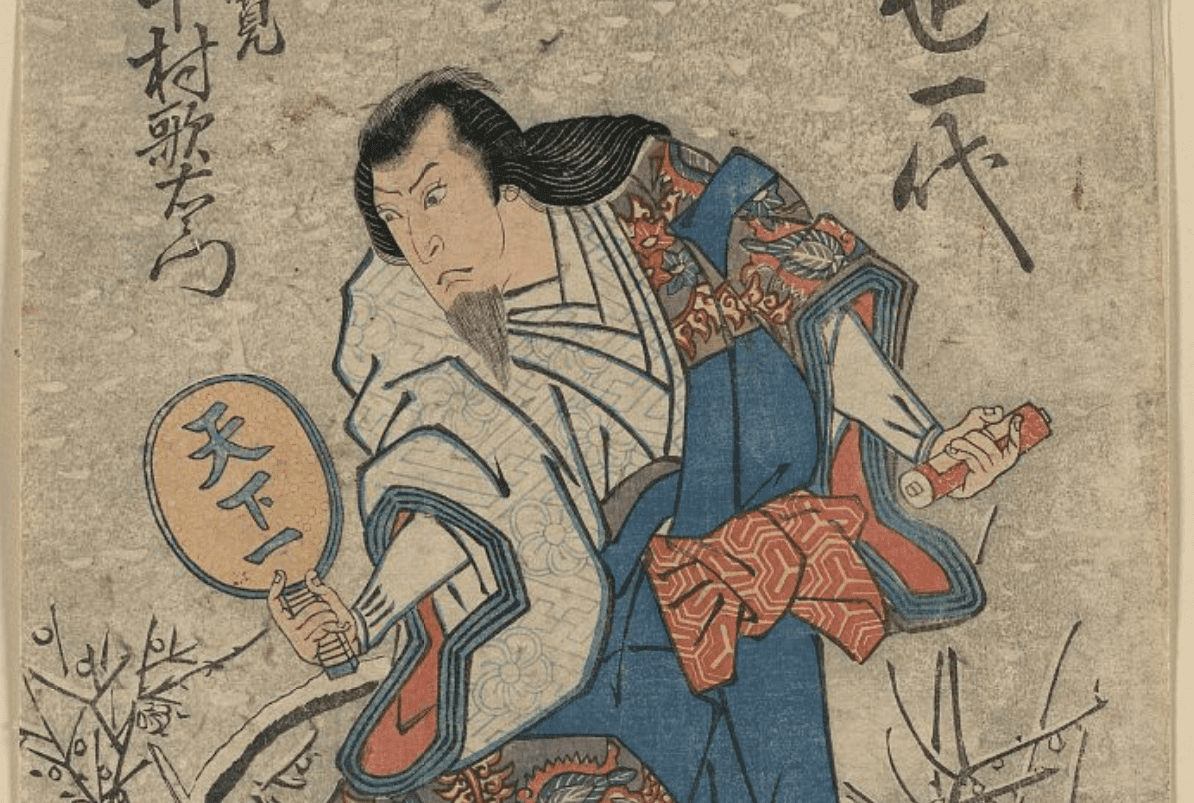 Picryl
Picryl





